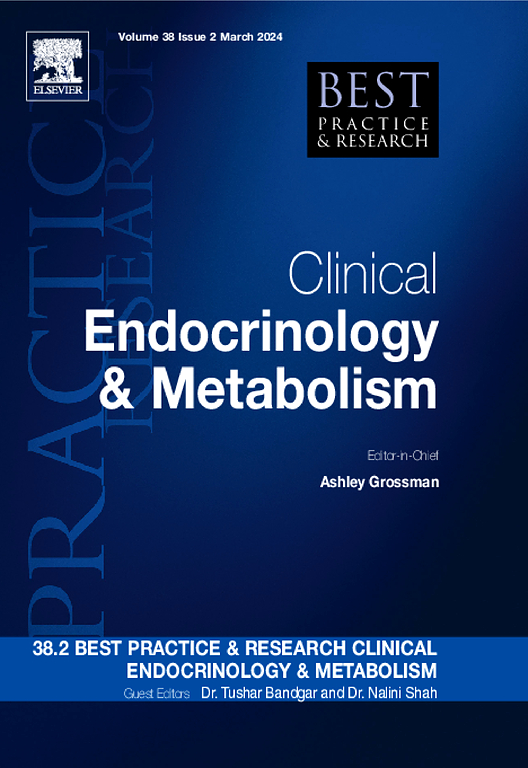Gonadectomy in individuals with a difference of sex development – For whom, when, why, and why not?
IF 6.1
1区 医学
Q1 ENDOCRINOLOGY & METABOLISM
Best practice & research. Clinical endocrinology & metabolism
Pub Date : 2025-07-01
DOI:10.1016/j.beem.2025.102019
引用次数: 0
Abstract
Several forms of differences of sex development (DSD) are associated with an increased risk of gonadal germ cell cancer, which can be prevented by a gonadectomy. However, when considering prophylactic gonadectomy potential benefits need to be carefully weighed against potential harms, taking into account factors such as endocrine function of the gonad, potential fertility and the risk of germ cell cancer. While evidence is available for particular diagnoses, to assess gonadal function and risk at an individual level remains challenging. A comprehensive approach to assessment is described. Alternatives to gonadectomy include surveillance for cancer development but current methods have low sensitivity and specificity. Undesired sex steroid production can be suppressed with GnRH analogue treatment. Unless it poses an unacceptable medical risk, it is generally preferable to delay a decision regarding gonadectomy until the individual can be involved in a shared decision making process.
性发育差异个体的性腺切除术-为谁,何时,为什么,为什么不?
几种形式的性发育差异(DSD)与性腺生殖细胞癌的风险增加有关,这可以通过性腺切除术来预防。然而,在考虑预防性性腺切除术的潜在益处和潜在危害时,需要仔细权衡,考虑到性腺内分泌功能、潜在生育能力和生殖细胞癌风险等因素。虽然有证据可用于特定的诊断,但在个体水平上评估性腺功能和风险仍然具有挑战性。描述了一种全面的评估方法。替代性腺切除术的方法包括监测癌症的发展,但目前的方法灵敏度和特异性较低。不希望的性类固醇产生可以抑制与GnRH类似物治疗。除非它会造成不可接受的医疗风险,否则通常最好推迟关于性腺切除术的决定,直到个人可以参与共同的决策过程。
本文章由计算机程序翻译,如有差异,请以英文原文为准。
求助全文
约1分钟内获得全文
求助全文
来源期刊
CiteScore
11.90
自引率
0.00%
发文量
77
审稿时长
6-12 weeks
期刊介绍:
Best Practice & Research Clinical Endocrinology & Metabolism is a serial publication that integrates the latest original research findings into evidence-based review articles. These articles aim to address key clinical issues related to diagnosis, treatment, and patient management.
Each issue adopts a problem-oriented approach, focusing on key questions and clearly outlining what is known while identifying areas for future research. Practical management strategies are described to facilitate application to individual patients. The series targets physicians in practice or training.

 求助内容:
求助内容: 应助结果提醒方式:
应助结果提醒方式:


